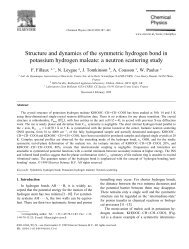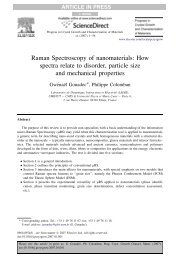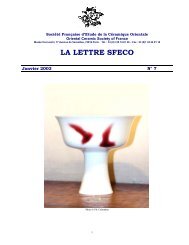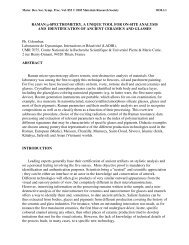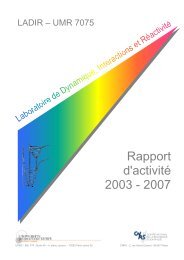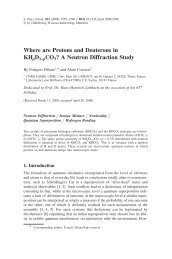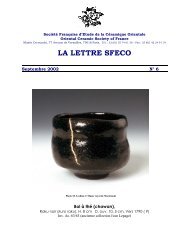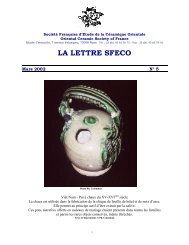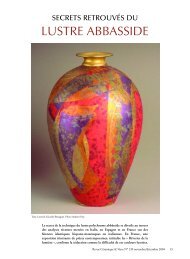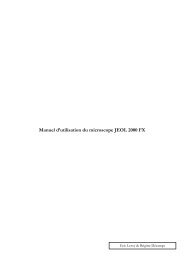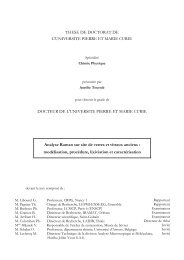12 Nano/microstructure - institut de chimie et des materiaux paris-est
12 Nano/microstructure - institut de chimie et des materiaux paris-est
12 Nano/microstructure - institut de chimie et des materiaux paris-est
- No tags were found...
Create successful ePaper yourself
Turn your PDF publications into a flip-book with our unique Google optimized e-Paper software.
DK4027_book.fm Page 317 Monday, May 16, 2005 2:01 PM<strong>Nano</strong>/<strong>microstructure</strong> and Multiphase Materials 317The preparation of ceramic (oxi<strong>de</strong>-oxi<strong>de</strong>, carbi<strong>de</strong>-carbi<strong>de</strong>, <strong>et</strong>c.) nanocompositesis also rather old and many authors have reported some exceptional properties.49,50 This field of study <strong>de</strong>veloped rapidly. It is clear that more work is nee<strong>de</strong>din or<strong>de</strong>r to further un<strong>de</strong>rstand the mechanics of nanocomposites.C. ONE-DIMENSIONAL AND TWO-DIMENSIONALFIBER-REINFORCED COMPOSITESOne of the main problems in the preparation of ceramic matrix composites (CMCs)is achieving a low open porosity in the matrix in or<strong>de</strong>r to protect the fiber from theenvironment and to optimize the mechanical strength and toughness. Fibrous fractureof CMCs is mandatory to g<strong>et</strong> a stable and reliable strength value to be used for parts<strong>de</strong>sign. In the case of weavable fibers forming a yarn, the interfiber voids are a fewmicrons or less in size, which makes infiltration of liquid or gaseous precursorsmandatory. <strong>12</strong>,23,67 In many cases, interyarn voids (1 to 100 mm 3 ) of textile preformsare accessible only through interfiber voids close to 1 to 5 µm. Chemical vaporinfiltration (CVI), a m<strong>et</strong>hod based on the infiltration of gaseous precursors, is moreexpensive because of the duration of the synthesis cycle and the need for specifictools for each cycle. 68,69 Furthermore, gaseous precursors are not well suited for themulticomponent oxi<strong>de</strong> compositions required for functional composites. The presenceof long-fiber geom<strong>et</strong>rically invariant reinforcement inhibits the coherent shrinkage ofthe matrix. In the case of one-dimensional or two-dimensional (textile) reinforcements,this phenomenon can be solved by hot-pressing: the in-plane shrinkage canbe counterbalanced by the thickness reduction if a viscous behavior is achieved duringthe hot-pressing. 67 A flowchart for this process is summarized in Figure <strong>12</strong>.8.Alkoxi<strong>de</strong>sM(OR) nPrepreg routeFabricsUltrafine pow<strong>de</strong>rImpregnation+in situ gelationDepositHot-pressingStackingFIGURE <strong>12</strong>.8 Schematic of the sol-gel process for the fabrication of woven fabricsreinforced CMCs. 87



